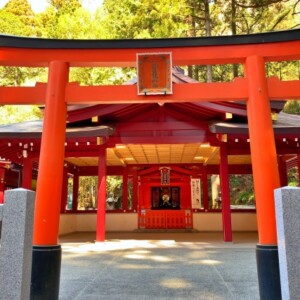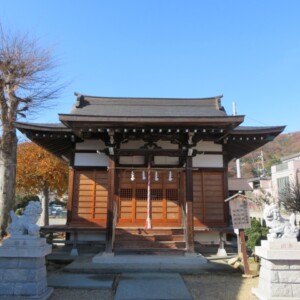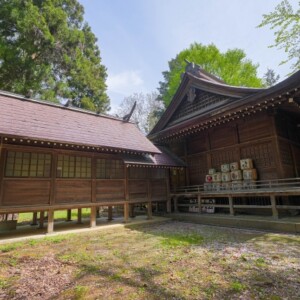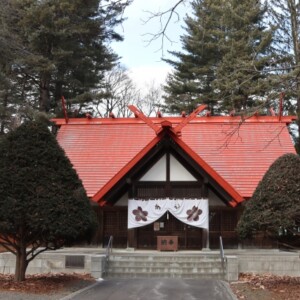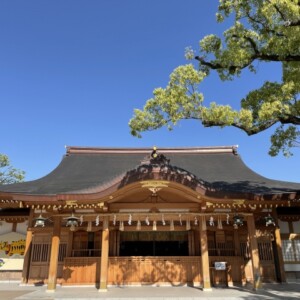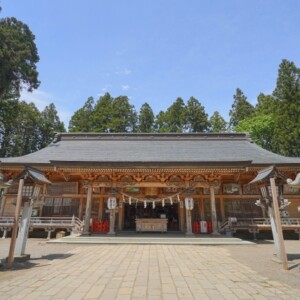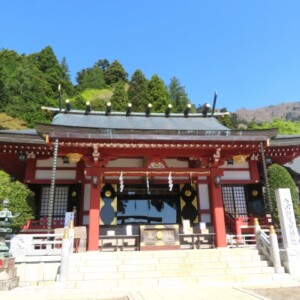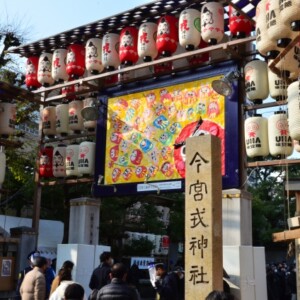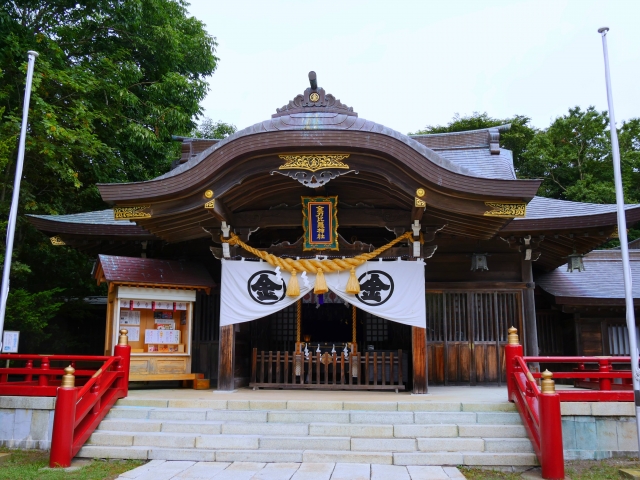
Kintohira Shrine|Complete guide to the history, highlights, and worship information of this historic shrine
Located in Nemuro City, Hokkaido, Kintohira Shrine is a historic shrine founded in 1806 by Kahei Takataya. It is well known as a god of safety at sea and prosperity in business, and also plays a special role in taking care of the sacred objects of shrines in the Northern Territories. Every August, the shrine holds a grand annual festival, one of the three major festivals in Hokkaido, which attracts a large number of worshippers.
Outline and basic information about the Konpira Shrine
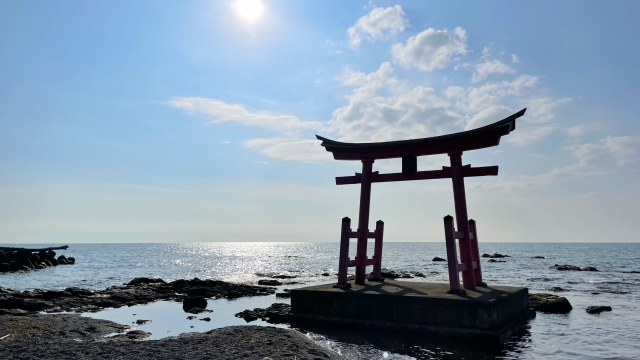
Konpira Shrine is located in Kotohira-cho, Nemuro City, Hokkaido, and is a shrine of the Konpira faith, with Konpira Shrine in Kagawa Prefecture as its head shrine. The shrine has a history that has developed along with the development of Nemuro, and is affectionately known as “Kompira-san” by the local people. The current shrine is a former prefectural shrine and is positioned as an important shrine in the Nemuro area.
History and Origin
Konpira Shrine dates back to the 3rd year of Bunka era (1806). It began as a shrine built in 1806 by Kahei Takataya, a merchant who was the founder of the northern fishery development and opened the fishing grounds of Nemuro. It is said that Kahei Takataya was a fishing contractor in Nemuro at the time, and dedicated the shrine to the deity Konpira to pray for maritime safety and business prosperity.
The shrine was relocated to its current location in 1881. The shrine’s prestige as a Shinto shrine was enhanced through the transition of its status as a township shrine in the same year and as a prefectural shrine in 1919. In the Meiji period (1868-1912), the shrine was authorized by the Kaitakushi (Development Agency) to become an official shrine, and along with the relocation to the present location, the shrine buildings were constructed and the shrine grounds were improved.
In 1946 (Showa 21), the shrine began to play the important role of temporarily housing the sacred body of the shrine on the islands of the Northern Territories. This began when the islanders, who were forced to leave the islands after the end of the war due to the Soviet occupation of the Northern Territories, volunteered to bring the sacred objects back to the mainland.
Deities and Benefits
The three principal deities of Konpira Shrine are Omononushi no Mikami, Kotoshironushi no Mikami, and Uganomitama no Mikoto. Each of these deities is believed to bring different benefits.
The deity Omononokami is known as the god of land development and industrial promotion, Kotoshironushi is the god of prosperous business and fishing, and Kurainatamikoto is believed to be the god of a good harvest and food. The belief in Kintohira is characterized by a particularly strong belief in the blessings of maritime safety and safe voyages, a belief that is also in keeping with Nemuro’s location surrounded by the sea. Even today, many people involved in the fishing and shipping industries, as well as those wishing for prosperous business, visit the shrine to pray.
Highlights and Features of Konpira Shrine
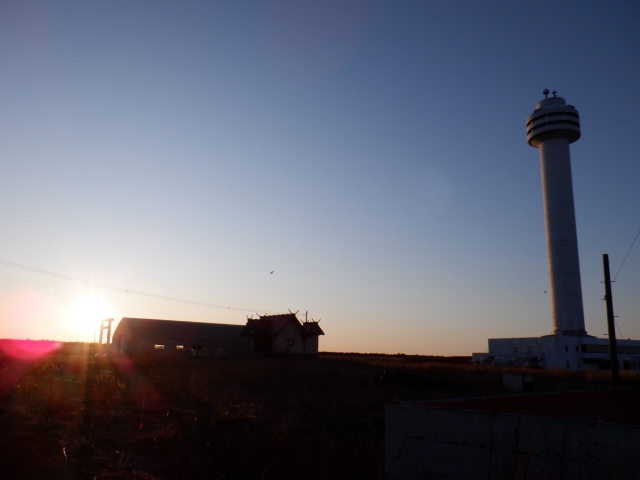
The Kintohira Shrine has numerous attractions that have been cultivated over its long history. From the buildings on the shrine grounds to the exhibition facilities, the shrine is a valuable place that conveys the history and culture of Nemuro to visitors.
Architectural and Structural Attractions
The main shrine pavilion, built in the irimoya-ryuzukuri style, is a beautiful example of traditional shrine architecture. The current shrine pavilion was built in 1942, and is a valuable structure that conveys the prewar techniques and design of the shrine to the present.
The precincts of the shrine cover a vast area of 34,171 m2, allowing visitors to worship in a relaxed atmosphere. The precincts of the shrine also include a hand-watering basin and a kaguraden (Shinto music and dance hall), creating an environment where worshippers can pray in peace and tranquility.
The shrine also has a magnificent torii gate at the entrance, from which visitors can look out over the ocean. The view of the shrine in harmony with the sea of Nemuro leaves a deep impression on visitors.
Storage of the Shrine’s sacred body in the Northern Territories
One of the most distinctive roles of the Konpira Shrine is that it also keeps the sacred bodies of the shrines located on Taraku Island, Shihatsu Island, Shisho Island, Shikotan Island, and Kunashiri Island in the Northern Territories, and holds a ceremony on each company’s regular festival day.
At the end of the war, the four northern islands were illegally occupied by the Soviet Union (now Russia), and the 17,291 islanders were forced to leave their homeland. At that time, the islanders risked their lives to bring back to the mainland the sacred objects of 11 shrines, which were entrusted to the custody of the Konpira Shrine.
Even today, former islanders, their families, and related people gather at each shrine every year on the day of the shrine’s annual festival to pray for the return of the Northern Territories as soon as possible. This is more than just a religious event; it has become an important cultural activity to continue interest in the Northern Territories issue.
Mikoshi-den (portable shrine) and festival archives
In 2005, the 200th anniversary of the founding of the Konpira Shrine, the portable shrine was redecorated, and a new shrine office was built to house the “Mikoshiden (portable shrine hall) and festival museum,” which is one of the major attractions of the shrine.
This facility displays a large mikoshi weighing approximately 1.5 tons, and admission is free. The mikoshi is actually used in the annual festival, and visitors can see its grandeur and beauty up close. In the museum section, photos of past festivals and valuable materials related to festivals are on display, allowing visitors to gain a deeper understanding of Nemuro’s festival culture.
There is also an exhibit on the Northern Territories, which is a valuable learning opportunity for visitors to learn about the history and current situation of the Northern Territories through photos and documents of the shrines that once stood on the islands.
Visiting and Worship Information
Visiting the Konpira Shrine can be a more meaningful experience if basic manners are observed. Various events are held throughout the year, and the summer festival in particular is an event not to be missed.
Worship Etiquette and Manners
Visiting the Konpira Shrine is done in accordance with general shrine etiquette. First, bow when passing through the torii gate, and walk along the edge of the path, as the center of the path is considered to be the path of the deities.
At the hand-watering place, purify your body by cleansing your left hand, then your right hand, and rinse your mouth. Currently, some shrines have automatic hand-watering stations to prevent new coronavirus infections. In front of the main shrine, perform the two-beat-and-one-worship ritual.
Many prayers are offered at Konpira Shrine for maritime safety, prosperous business, and a good harvest. By praying wholeheartedly, you are sure to receive blessings from the gods. After visiting the shrine, it is considered a good idea to return home without looking back the way you came.
Konpira Shrine Annual Festival
The annual three-day festival is held at Konpira Shrine on August 9 (Yoimiya Matsuri), 10 (Honsai, portable shrine procession), and 11 (Omikoshi-togyo), and is widely known as one of the three major festivals in Hokkaido.
The main highlight of the festival is the parade of the portable shrine. The mikoshi, weighing approximately 1.5 tons, is carried by hand throughout the festival, and the floats of the four festival districts are accompanied by performances by children and young people, including tekomai, kanabo, saki-daiko, and ohayashi (traditional Japanese music), in a spectacular procession through the city.
Each parade is composed of 10 sections, including flag bearers, taiko drummers, kanabo, floats, etc., and each section adds its own unique flavor to the festival.
On May 19, 2020, the festival was designated as a Hokkaido Intangible Folk Cultural Asset, officially recognizing its cultural value. The festival is supported by the traditional skills and passion that have been passed down from generation to generation by local people.
Red Seal and Good Luck Charm Information
Konpira Shrine offers red seals, which are accepted from 08:30 to 12:00 and 13:00 to 17:00. However, during the following periods, as well as when priests are not available due to festivals, etc., red seals cannot be written directly into the red seal book.
The red seal is a special one that expresses the uniqueness of Nemuro, with the words “Easternmost point of the mainland” and “Pray for the return of the Northern Territories” written on the seal. Care has also been taken to create a cutout red seal with a design that will give visitors who have come a long way to Nemuro a sense of “Nemuro”.
The most popular good luck charms are “Tabimamori” and “Fukuzanmai-mikuji. The “Tabimamori” is popular among visitors as a commemorative charm for visiting the easternmost point of the mainland and as a prayer for travel safety. The “Fukuzanmai-mikuji” is part of the Hokkaido Gotochi-mikuji series, which features papier-mâché characters from various regions of Hokkaido.
There is also a unique amulet called “Yakuwari no tama” (ball of misfortune cracking), which is believed to smash disasters and troubles by transferring them into the ball and throwing it at the Yakuwari no iwa (rock of misfortune cracking). The “safety at sea” amulet is also popular among people involved in the fishing and shipping industries.
Access and Visiting Information
Access to Kintohira Shrine is relatively convenient, as it is located near the center of Nemuro City. It is advisable to check in advance, including information on visiting hours and parking.
Traffic Access
The most common means of transportation to Kintohira Shrine is from JR Nemuro Station, which is 3 km away (5 minutes by car, buses get off at Shiomi-cho, and there is good access from the station.
If accessing the shrine by car, it takes about 5 minutes from Nemuro Station. Signs are posted from major roads in Nemuro City to the shrine, so you will have no trouble getting there. If you take the bus, get off at the Shiomi-cho bus stop and walk a few minutes to the shrine.
Nemuro is the easternmost city on the mainland, about 6 hours by car from Sapporo and about 2 hours from Kushiro. If you are coming from far away, a typical route is to use Kushiro Airport, stay overnight in Kushiro City, and head to Nemuro the next day.
The area around the shrine commands a view of the sea, and on a clear day, it is even possible to see the shadow of the Northern Territories islands. This special location is one of the attractions of visiting Kintohira Shrine.
Address: 1-4 Kotohira-cho, Nemuro City, Hokkaido, 087-0055 Japan
Hours of visitation, fees, and parking information
Although the Konpira Shrine is open 24 hours a day, the shrine office, Mikoshi-den (portable shrine), and the Festival Museum are open from 8:30 a.m. to 5:00 p.m. During the winter season from January 15 to March 15, the hours are reduced to 9:00 a.m. to 4:30 p.m., so please be careful when visiting the shrine during the winter season.
There is no charge to visit the shrine, but an initial fee is required to receive a red seal or an amulet. Tours of the Mikoshi-den (portable shrine hall) and the Festival Museum can also be made free of charge, and visitors are free to view valuable portable shrines and festival materials.
Parking is available within the shrine grounds and is free of charge. There are ample parking spaces for general visitors, so access by car is safe. However, since crowding is expected during busy periods, such as during the annual festival, it is advisable to consider using public transportation.
If you wish to pray or participate in special events, advance reservations are recommended. For more information, please contact the shrine office directly.
Since there is snow in Nemuro during the winter months, it is recommended that visitors wear warm clothing and non-slip shoes when visiting the shrine. Also, strong winds often blow, so care should be taken with hats and other items that can easily be blown off.
Reference sites
Nemuro Konpira Shrine Official Website: https://www.nemuro-kotohira.com/
Hokkaido Jinja Agency: https://hokkaidojinjacho.jp/金刀比羅神社/



